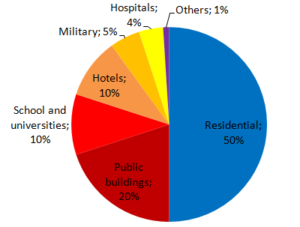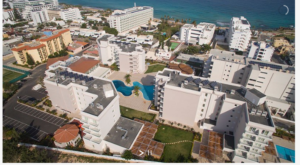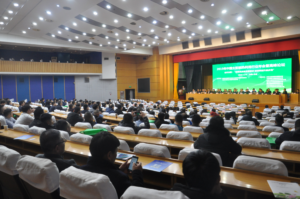China: Solar Process Heat and Space Heating and Cooling Rack Up Market Shares
April 19, 2017
China’s shift away from residential towards commercial solar thermal applications continues: The collector area of newly installed solar water heaters in single-family buildings declined by 26 % in 2016, whereas the ‘engineering segment’ remained stable last year (see the table below). This segment is comprised of all non-domestic hot water applications, such as space heating and cooling as well as applications in industry and agriculture. Overall, its share in the newly installed collector area went from 61 to 68 %. All figures were taken from the Report on the State of China’s Solar Thermal Industry (July to December 2016), a document drafted by Dezhou-based consultancy Sun’s Vision on behalf of CSTIF, the Chinese Solar Thermal Industry Federation. CSTIF has presented this report – which also includes several development strategies – to the National Energy Board.
The authors of the 8-page report emphasise the fact that overcapacities in collector production have declined steadily, as an increasing number of small suppliers offering less innovative residential solar water heaters closed down business because of sharply decreasing demand. The most valued brands in vacuum tube collector production, however, consolidated their market positions. These were Sunrise East Group (Sunrain and Micoe brands among others), Himin and Linuo Paradigma.
|
2015 |
Share in 2015 |
2016 |
Growth in 2016/2015 |
|
| Newly installed vacuum tube collectors [m²] |
38 million |
87.4 % |
34.18 million |
-10 % |
| Newly installed flat plate collectors [m²] |
5.5 million |
12.7 % |
5.34 million |
-3 % |
| Total newly installed collector area |
43.5 million |
39.52 million |
-9 % |
|
| Collector area installed in engineering segment |
26.535 million |
61 % |
26.89 million |
1 % |
| Collector area installed in retail |
16.965 million |
39 % |
12.61 million |
-26 % |
Key market figures in 2015 and 2016 (1 million m² corresponds to 700 kWth). The report states that the solar thermal industry continues to employ 3.5 million people despite a declining market in recent years.
In 2016, the share of flat plate collectors in the newly installed collector area showed another increase from 12.7 % the year prior to 13.5 %, which resulted in the addition of 5.34 million m² in total. CSTIF responded to the increasing popularity of flat plate collectors by establishing a Flat Plate Solar Thermal Professional Committee as part of the association in the second half of 2016.
The analysis by Sun´s Vision is based on the ambitious target from the 13th Five-Year Plan (2016 to 2020). The objective written into this plan is 800 million m² of collector area (560 GWth) by the end of 2020, a target which would nearly double today´s total collector area in operation (460 million m² or 322 GWth). The report puts the following figures on the potential of various solar thermal market segments by 2020:
- 10 % of urban buildings and 20 % of rural buildings could use solar thermal for space heating (around 930 million m² heated floor space)
- Solar thermal cooling could contribute 2 % to the cooling load of buildings (around 110 million m² airconditioned floor space)
- 10 % of industrial heat could be provided by solar thermal technologies
Shandong has been the Chinese province spearheading the increased deployment of solar space heating. On 24 November 2016, the provincial administration announced a subsidy scheme to support solar space heating systems in public buildings, such as schools, hospitals, nursing homes and day-care facilities, in ten towns across five of the province’s counties. Chinese towns are comprised of several villages, and several towns form a county. Other regulations of the new subsidy programme have yet to be announced. The target is a 70 % share in the use of clean decentralised heating among the province’s villages by 2020, as not all neighbourhoods can be supplied by central district heating.
The CSTIF report lists several strategies to foster market development, for example:
- Strengthen government policy to foster solar thermal market development
- Develop an innovation-driven strategy
- Create a fair and trustworthy market environment
- Build up an online monitoring platform to control solar thermal systems in operation
- Develop and improve solar space heating technologies
Websites of organisations mentioned in this article:
Chinese Solar Thermal Industry Federation: http://www.CSTIF.com , http://www.21tyn.com
Sunrise East Group: http://en.sunrain.com/
Himin: http://himinsun.com/
Linuo Paradigma: http://www.linuo-paradigma.com/


